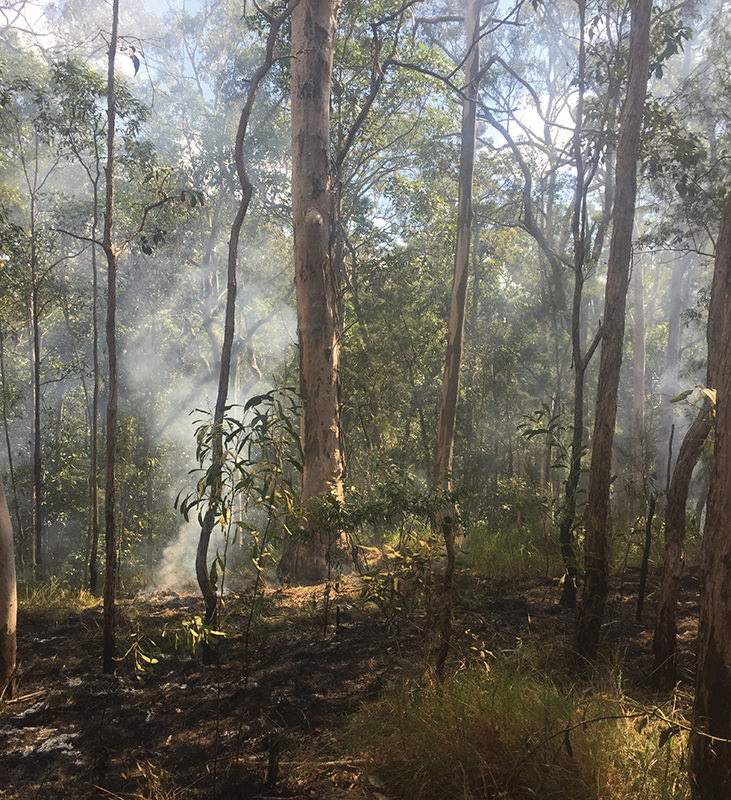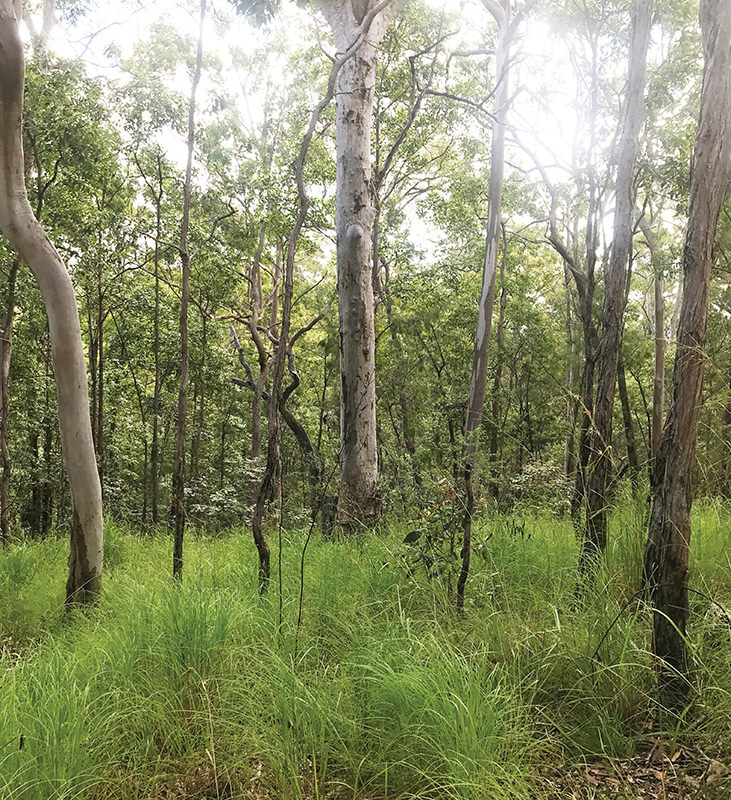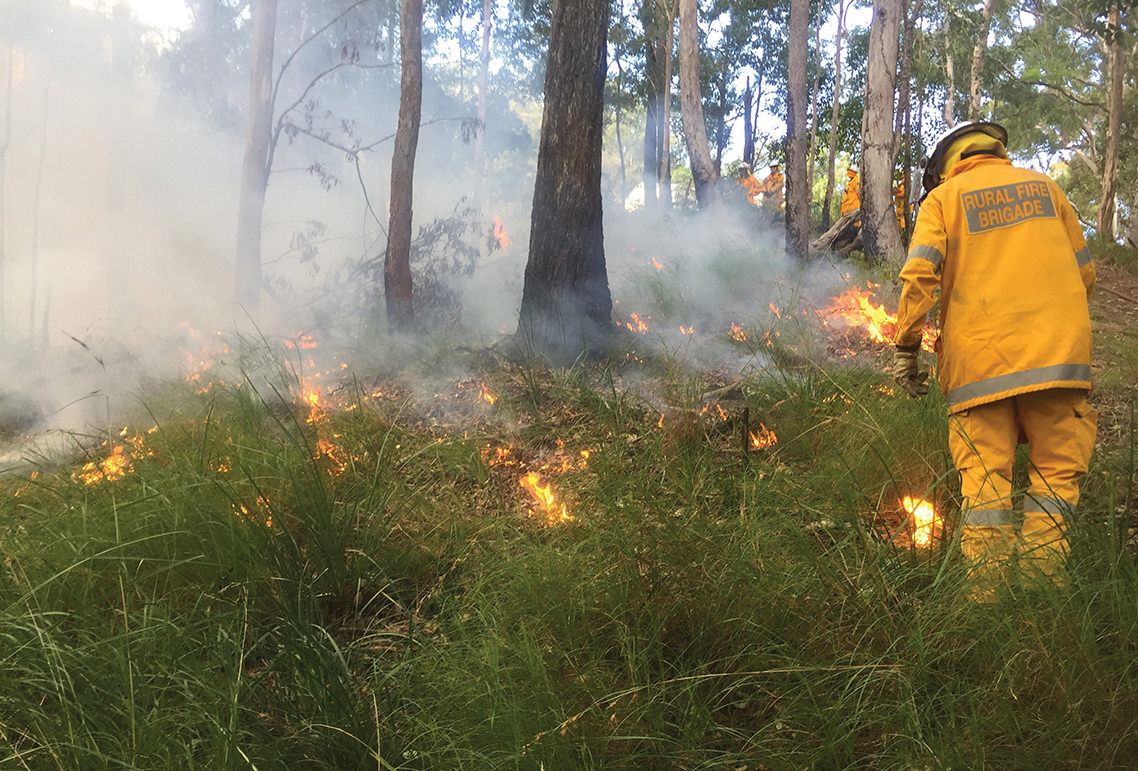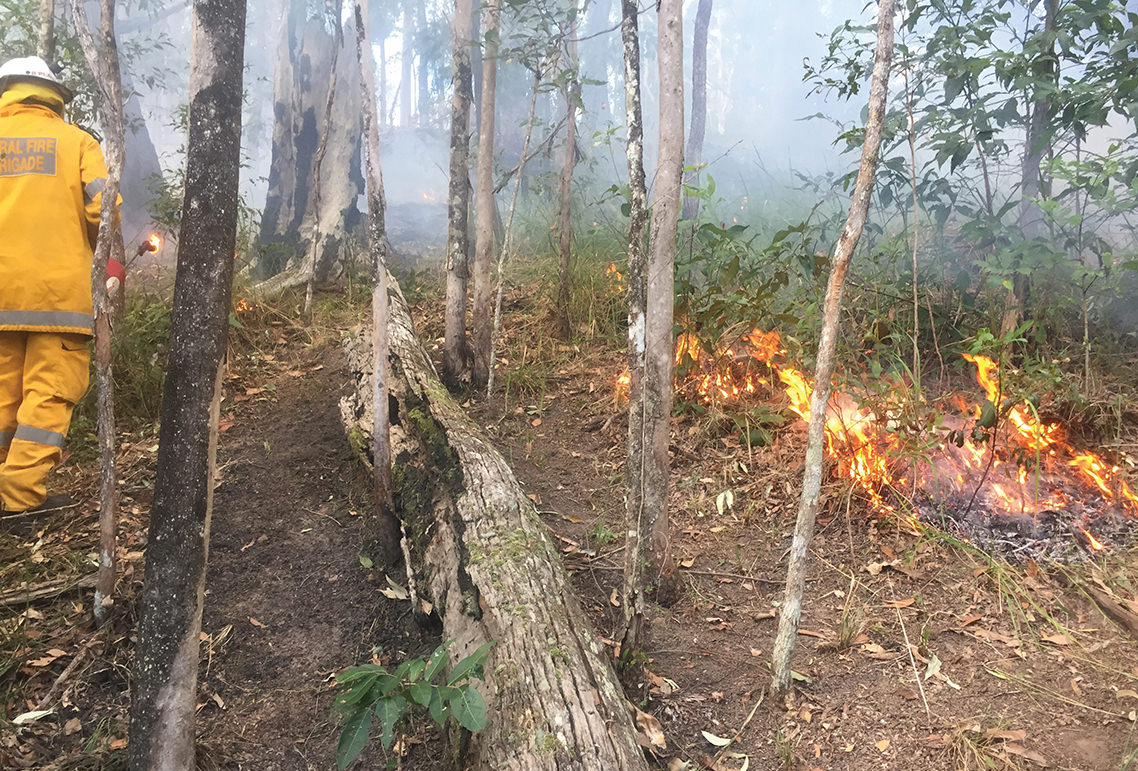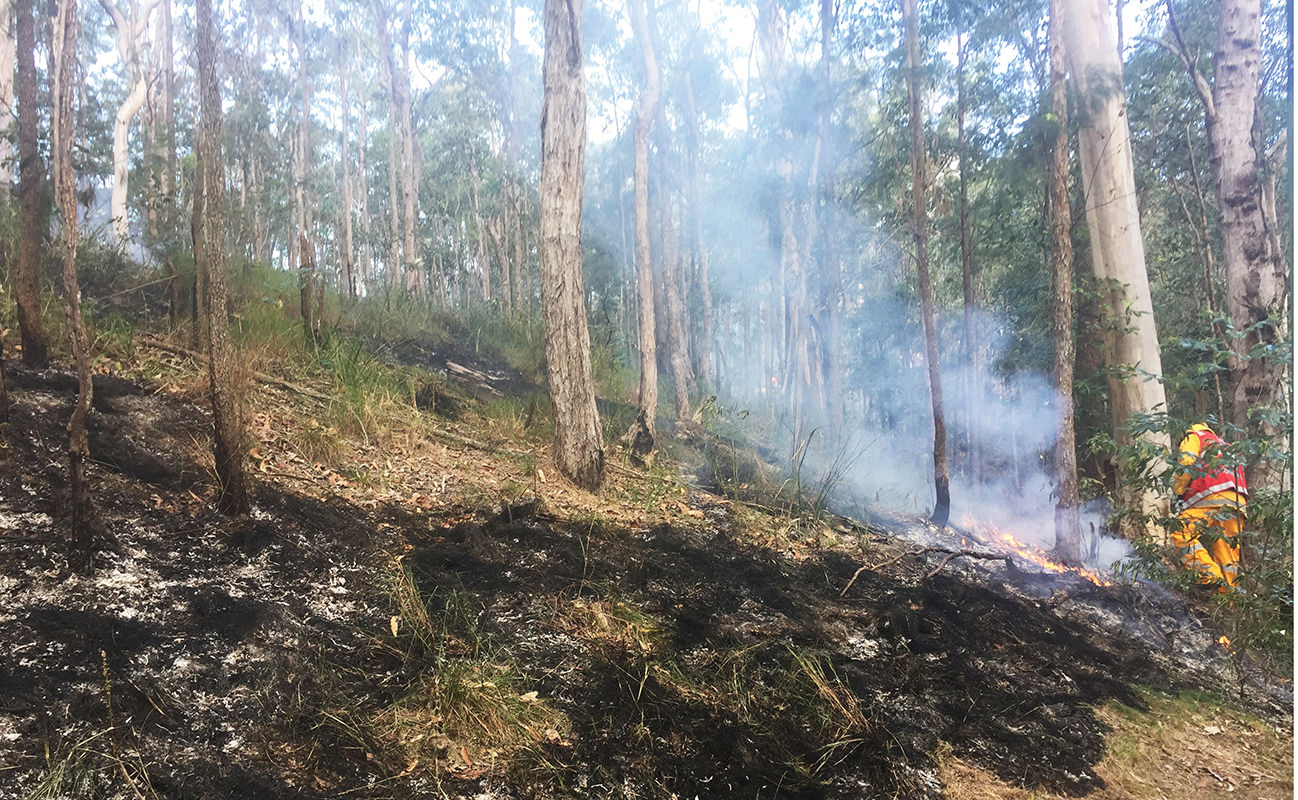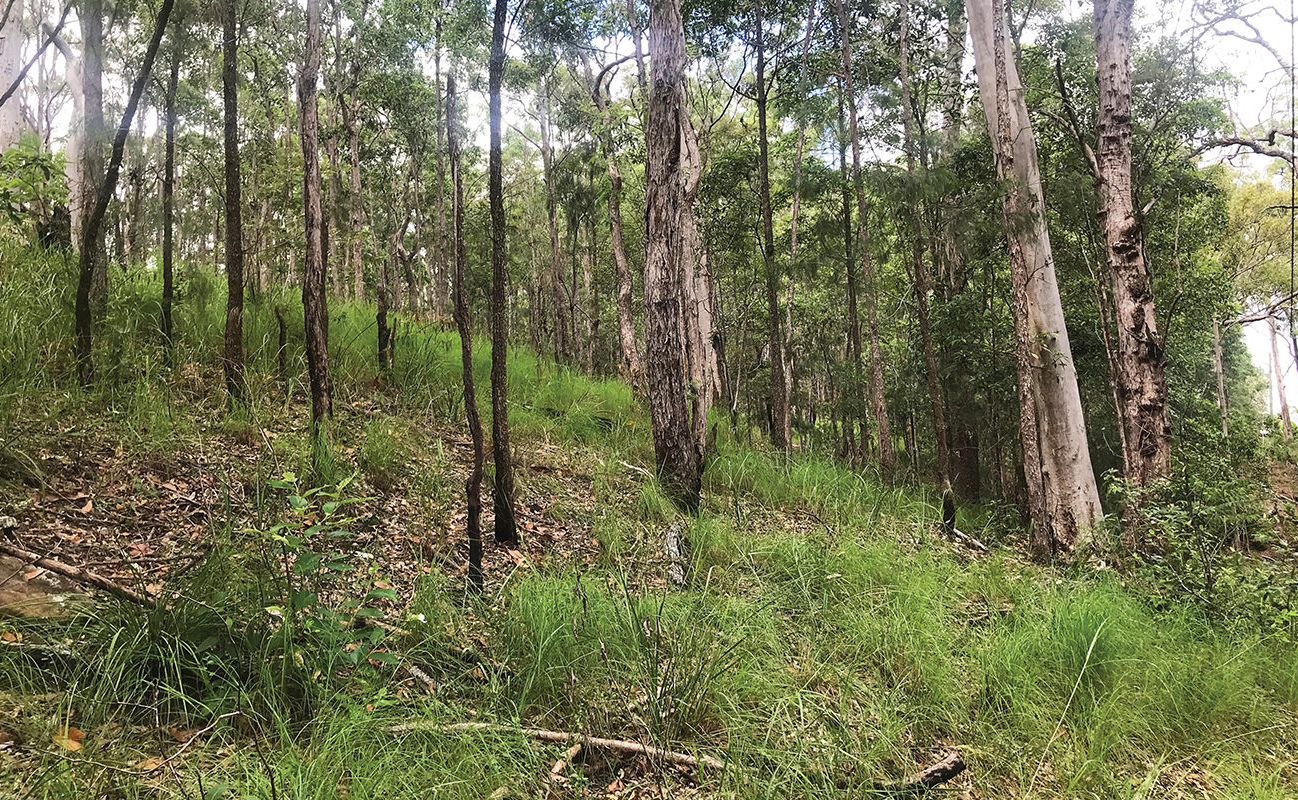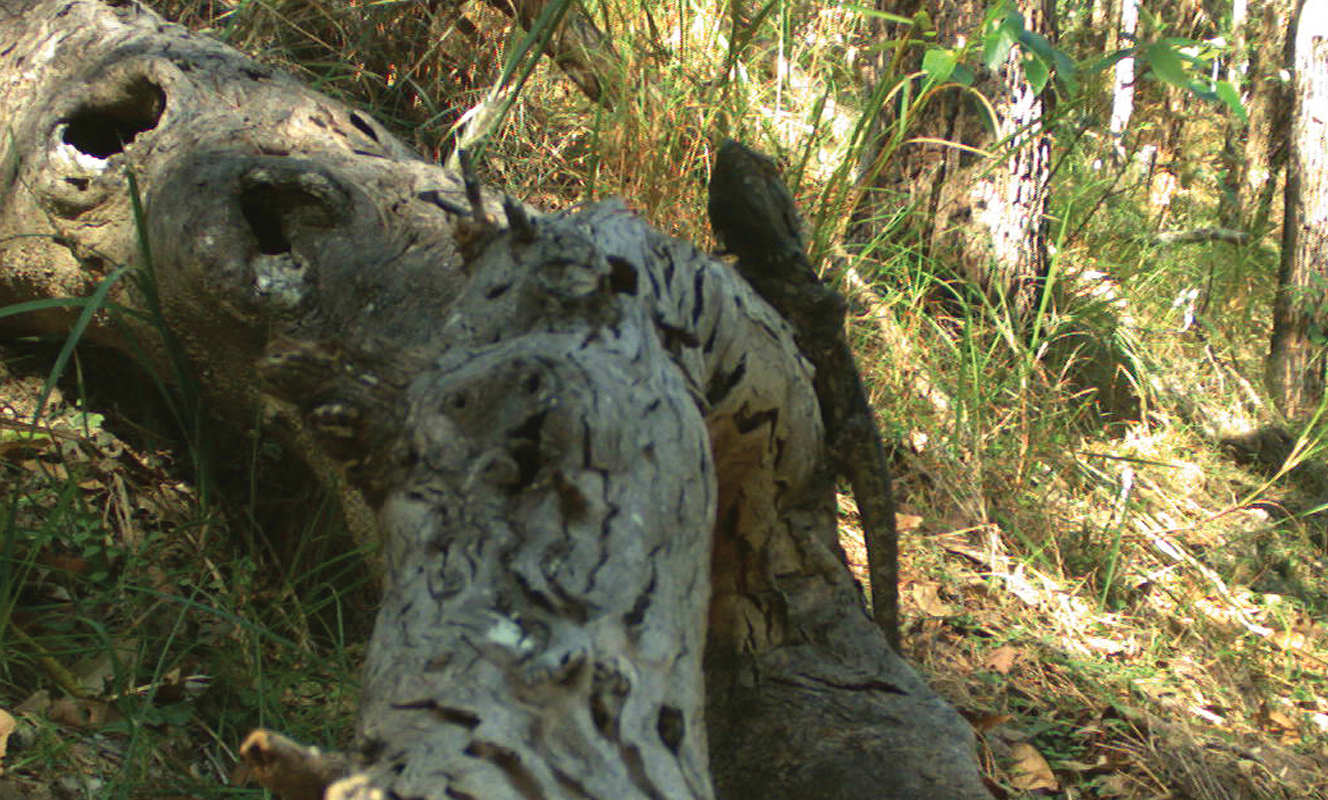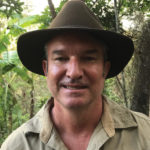There has been much discussion in the media about the recent bushfire season and the devastating impacts on wildlife. Wildlife carers were inundated with burnt, displaced and injured animals. As someone who lives amongst the gum trees, bushfire risk is something I think about often. Especially on days of heightened fire danger. While I have a bushfire plan and the property is generally well prepared, once the fire danger exceeds ‘very high’ it’s always an anxious time. That’s because it’s not really a matter of ‘if’ dry eucalypt forest will burn…. it’s ‘when’ it will burn.
This is part of the reason I choose to use fire as a habitat management and hazard reduction tool on parts of my Land for Wildlife property at Mooloolah Valley. At least this way I have some control over when these areas burn and what type of fire the plants and animals are subjected to. Regular low-intensity fire helps maintain the open structure of the forest which in turn favours the native grasses in the understorey.
From what I can tell, prior to my ownership the last fire was unplanned, very hot and probably more than 70 years ago. Unfortunately, during that long interval between fires, some areas have thickened considerably with the establishment of a very high stem density of thin, tall saplings (Lophostemon spp and Eucalyptus spp), which in turn have shaded out the native grasses in many areas. I say ‘unfortunate’ because it’s likely that some animal species (e.g. Whiptail Wallaby, Rufous Bettongs, Spotted Quail-thrush and Frilled-neck Lizards) that rely on such open grassy forest have gradually lost their habitat and are now likely extinct in the local area.
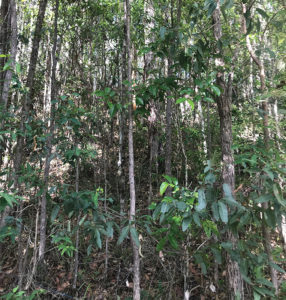
Such losses are gradual, occurring over decades and they often go unnoticed. Of course, there will have been other contributing factors to these disappearances such as habitat fragmentation and feral predation, but the gradual changes in forest structure and species composition that result through a changed fire regime are considered likely to be a contributing factor. The same is true for forests that have been subjected to too frequent fire.
With considerable assistance from the fantastic local rural fire brigade at Eudlo I have been able to reintroduce fire to small areas of my property by undertaking cool, mosaic burns in autumn and winter. My preference is to instigate these burns as soon as possible after the wetter summer months. This means burning when there is still good soil moisture and avoiding the hotter, drier and windier conditions that are more common in spring. Ultimately the individual year and season dictates if and when the burning window opens and for how long. I have learnt that to make it happen, it pays to be prepared early and ready to go when the conditions are right.
Within the designated burn areas there is quite a lot of woody debris such as large fallen logs with hollows that provide habitat for a wide range of species. Pre-burn preparation involves clearing fuel back from around these habitat features so they don’t catch alight. The ‘spot’ ignition pattern (similar to some traditional indigenous burning methods) employed also assists in being able to protect these areas by burning away from them. This method also aids in achieving a mosaic of burnt and unburnt areas within the containment lines of the total burn area.
A few months post-fire and the improved health and vigour of the native grasses in the burnt areas is very obvious when compared to adjacent unburnt areas. By using fire as a habitat management tool in this way the gradual ‘homogenisation’ of forest structure can be averted by creating a mosaic of forest patches at varying stages of post fire regrowth. This in turn provides a diversity of habitat niches for a wider range of species.
The day after the most recent prescribed burn (July 2019) I deployed motion cameras within these small unburnt patches and on the unburnt habitat logs. I was interested to see if some of the critters that I regularly see in this area would be displaced until after the burn area regenerated. Of particular interest to me were two species that spend much of their time on the ground, the Painted Button-quail and Bearded Dragon. Both species are regularly seen in this area and on an adjacent track. Anecdotal sightings of both species have increased over the last decade since the regular use of fire was re-introduced.
I was also interested to see if the cameras detected any feral predators such as Red Foxes. Research has shown that foxes will opportunistically move in to recently burnt areas presumably to take advantage of the reduced cover available to prey (Hradsky et al, 2017). When I checked the cameras, I was pleased to see that both the Painted Button-quails and Bearded Dragons were photographed using the unburnt ‘islands’ within a couple of days of the burn. It was also interesting to see a Swamp Wallaby using the area within 24 hours post-burn. No foxes or other feral predators were detected over a two-week period.
Fire management is a complex, often emotive and sometimes divisive issue. The gap between theory and the realities of practice can be a big hurdle for landholders to negotiate. Being pro-active with the use of fire on your property in South East Queensland, especially in peri-urban areas is challenging as there are many obstacles. These include but are not limited to physical capacity, resources, knowledge, regulation, neighbours, topography, infrastructure, weather and a seemingly shortening window of opportunity to safely put fire on the ground. As relayed to me by a retired cane farmer and current Land for Wildlife member “fire is a good servant but a bad master”.
First Nation’s people across Australia have used fire as a habitat management tool for tens of thousands of years and the landscape we see today is a product of their fire management practices. When the first Europeans arrived in Australia much of the country was subjected to regular mosaic burning and what they encountered was a country with a rich diversity and abundance of wildlife. Unfortunately, as we saw last summer we now have a situation where regular uncontrolled and incredibly intense wildfires are having the opposite effect on wildlife populations, populations that are already struggling with numerous others pressures.
The South East Queensland Fire and Biodiversity Consortium has a wealth of information and resources available on their website www.fireandbiodiversity.org.au. They also regularly partner with Land for Wildlife staff to deliver property fire management planning workshops for interested landholders.
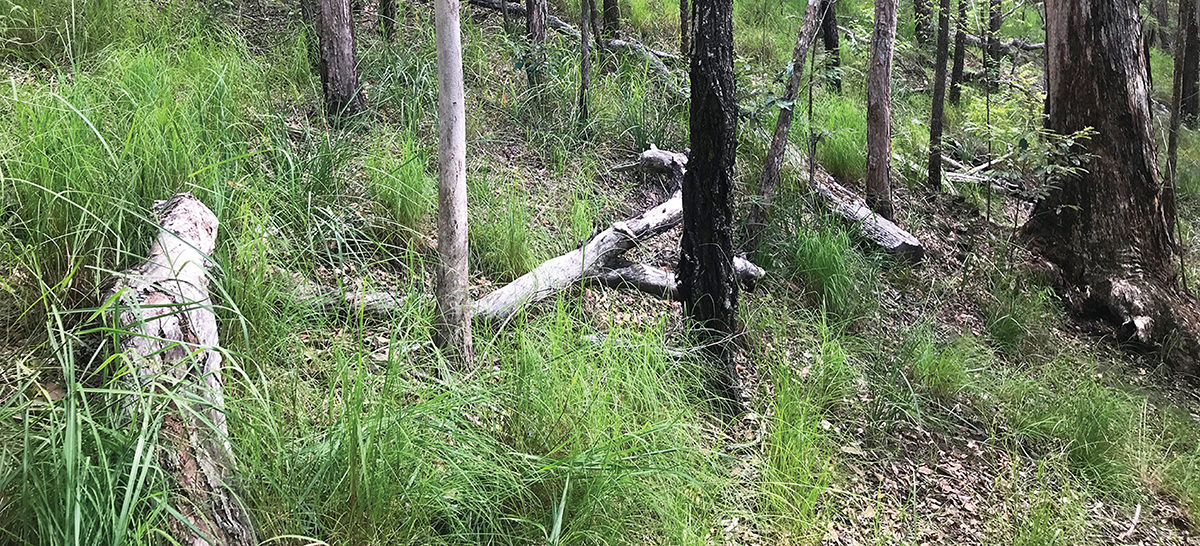
References & further reading:
Gammage B (2012) The Biggest Estate on Earth: How Aborigines made Australia. Allen & Unwin.
Hradsky B et al (2017) Responses of invasive predators and native prey to a prescribed forest fire. Journal of Mammalogy.
Article and photos by Nick Clancy
Land for Wildlife Officer
Sunshine Coast Council

